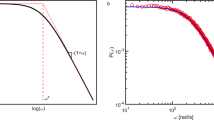Abstract
Traditional multimedia systems deal with only a few basic media: text, graphics, audio and video. However, many other types of media, such as ultrasound, infrared and RF signals, can be represented by streams of data samples and processed within multimedia applications. In this paper, we introduce some of these new media domains and identify interesting opportunities enabled by their software-based processing. We also describe our SpectrumWare testbed for experimenting with these new media types and report on our experience to date.
We believe that the time has come to broaden the scope of ‘multimedia’ to include any form of sampled information. Advances in processor and analog-to-digital conversion technology have brought raw sample streams within the grasp of desktop computers and media processing systems. Coupling these new media types with software-based processing allows the construction of virtual devices that can handle different sample sources, modify their behavior based on information extracted from the media, and transform information between media domains.
Similar content being viewed by others
References
E. Amir, S. McCanne, and M. Vetterli, “A layered DCT coder for internet video,” in International Conference on Image Processing, 1996.
Ivan A. Getting, “The global positioning system,” IEEE Spectrum, pp. 36–47, Dec. 1993.
Henry H. Houh, Joel F. Adam, Michael Ismert, Christopher J. Lindblad, and David L. Tennenhouse, “The VuNet desk area network: architecture, implementation, and experience,” IEEE J-SAC, Vol. 13, No. 4, pp. 710–721, May 1995.
Mike Ismert, General Purpose PCI I/O Specification. http://www.tns.lcs.mit.edu/izzy/gppi.ps.
Raymond J. Lackey and Donal W. Upmal, “Speakeasy: The military software radio,” IEEE Communications Magazine, Vol. 33, No. 5, pp. 56–61, May 1995.
Christopher J. Lindblad and David L. Tennenhouse, “The VuSystem: A programming system for compute-intensive multimedia,” Journal on Selected Areas of Communication, 1996 (to appear).
Sharon E. Perl and Richard L. Sites, “Studies of Windows NT performance using dynamic execution traces,” in Second Symposium on Operating Systems Design and Implementation, pp. 169–183, Oct. 1996.
Henry A. Rowley, Shumeet Baluja, and Takeo Kanade, “Human face detection in visual scenes,” Technical Report CMU-CS-95-158R, School of Computer Science, Carnegie Mellon University, 1995.
Lawrence C. Stewart, Andrew C. Payne, and Thomas M. Levergood, “Are DSP chips obsolete?” Technical Report CRL 92/10, Cambridge Research Laboratory, Cambridge, MA, 1992.
David L. Tennenhouse and Vanu G. Bose, “The Spectrum Ware approach to wireless signal processing,” Wireless Networks, Vol. 2, pp. 1–12, 1996.
Bruce Tuch, “Development of WaveLAN, an ISM band wireless LAN,” AT&T Technical Journal, pp. 27–37, July 1993.
T. Turletti, “H.261 software codec for videoconferencing over the internet,” Technical Report 1834, INRIA, Jan. 1993.
Author information
Authors and Affiliations
Rights and permissions
About this article
Cite this article
Bose, V.G., Chiu, A.G. & Tennenhouse, D.L. Virtual Sample Processing: Extending the Reach of Multimedia. Multimedia Tools and Applications 5, 259–276 (1997). https://doi.org/10.1023/A:1009699608418
Issue Date:
DOI: https://doi.org/10.1023/A:1009699608418




